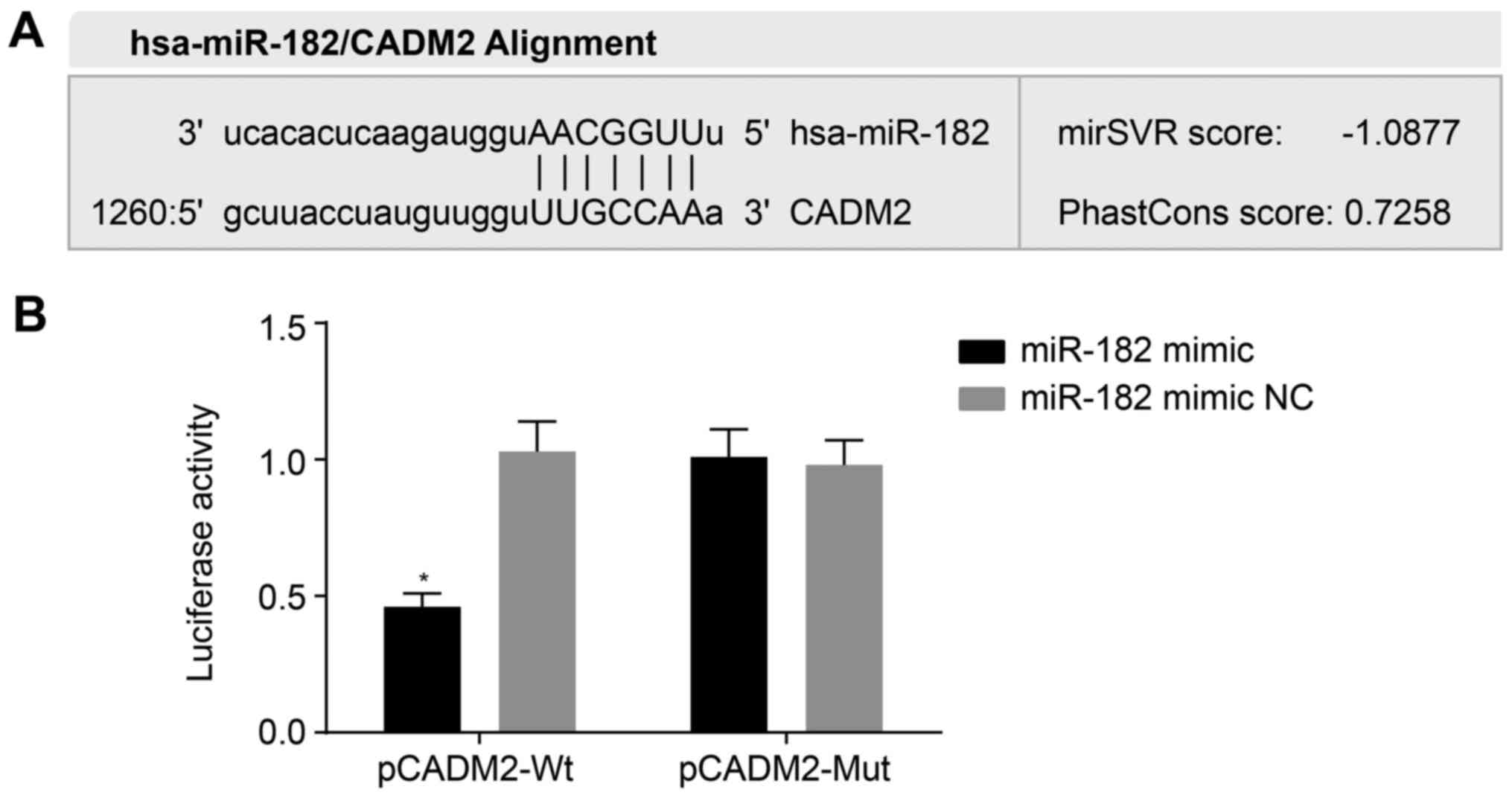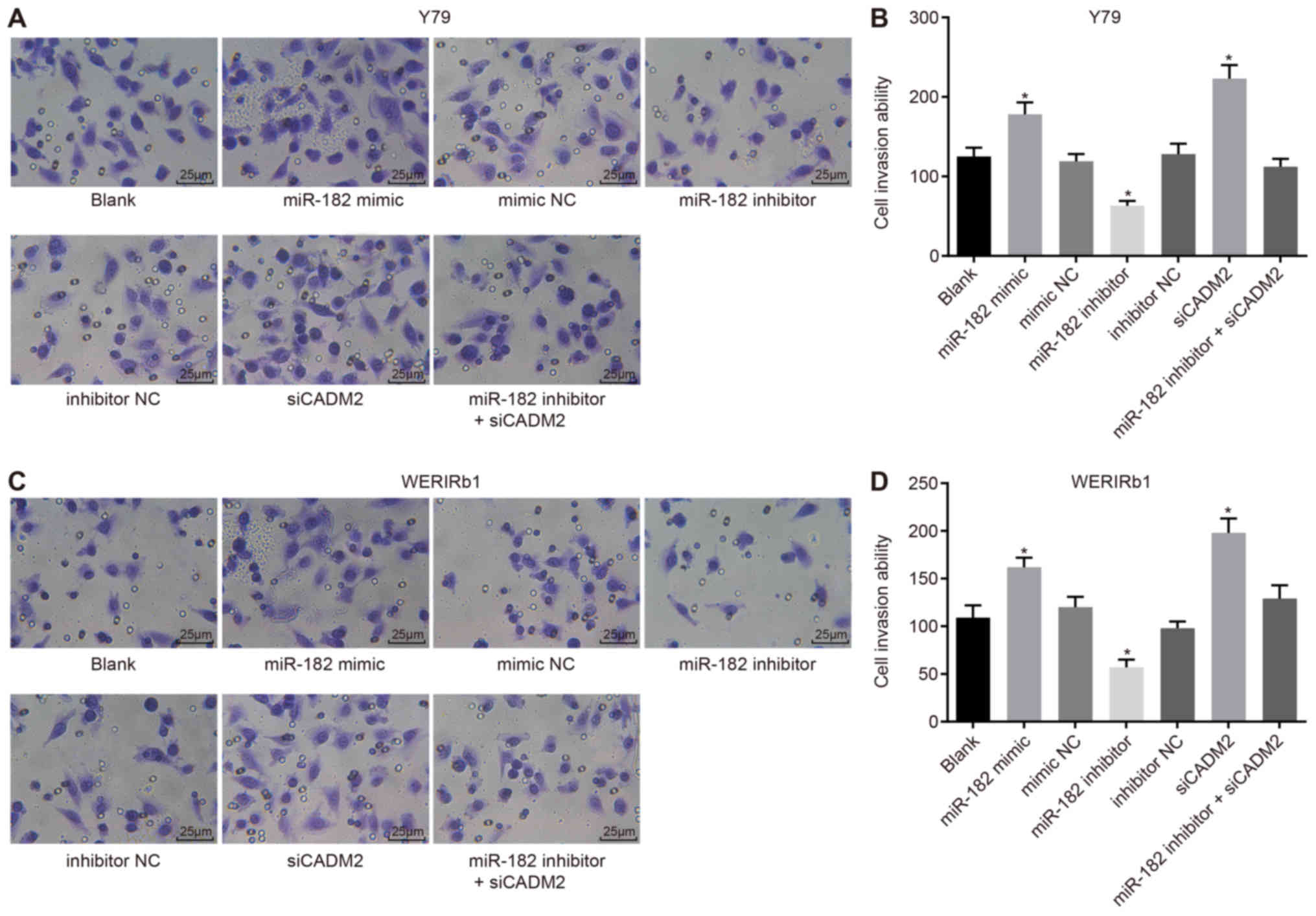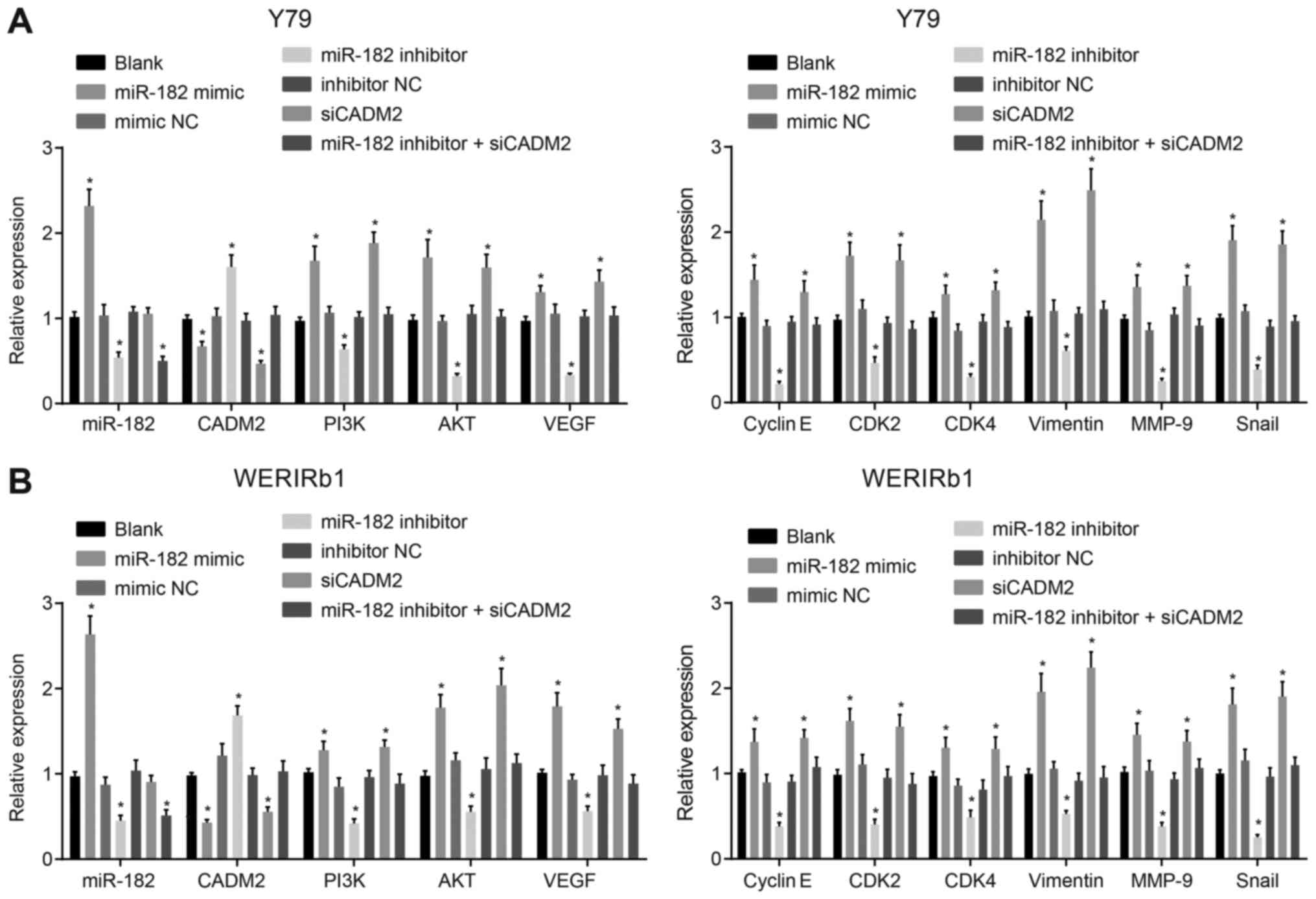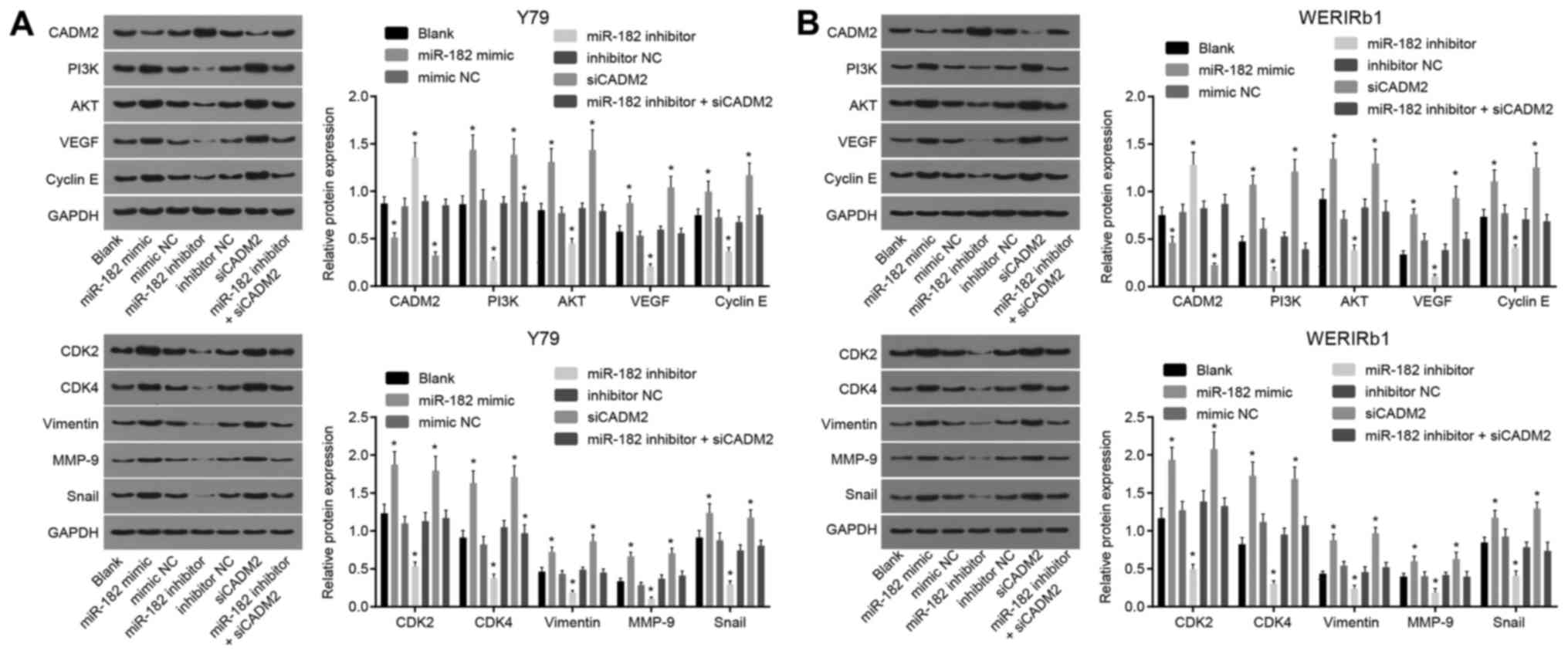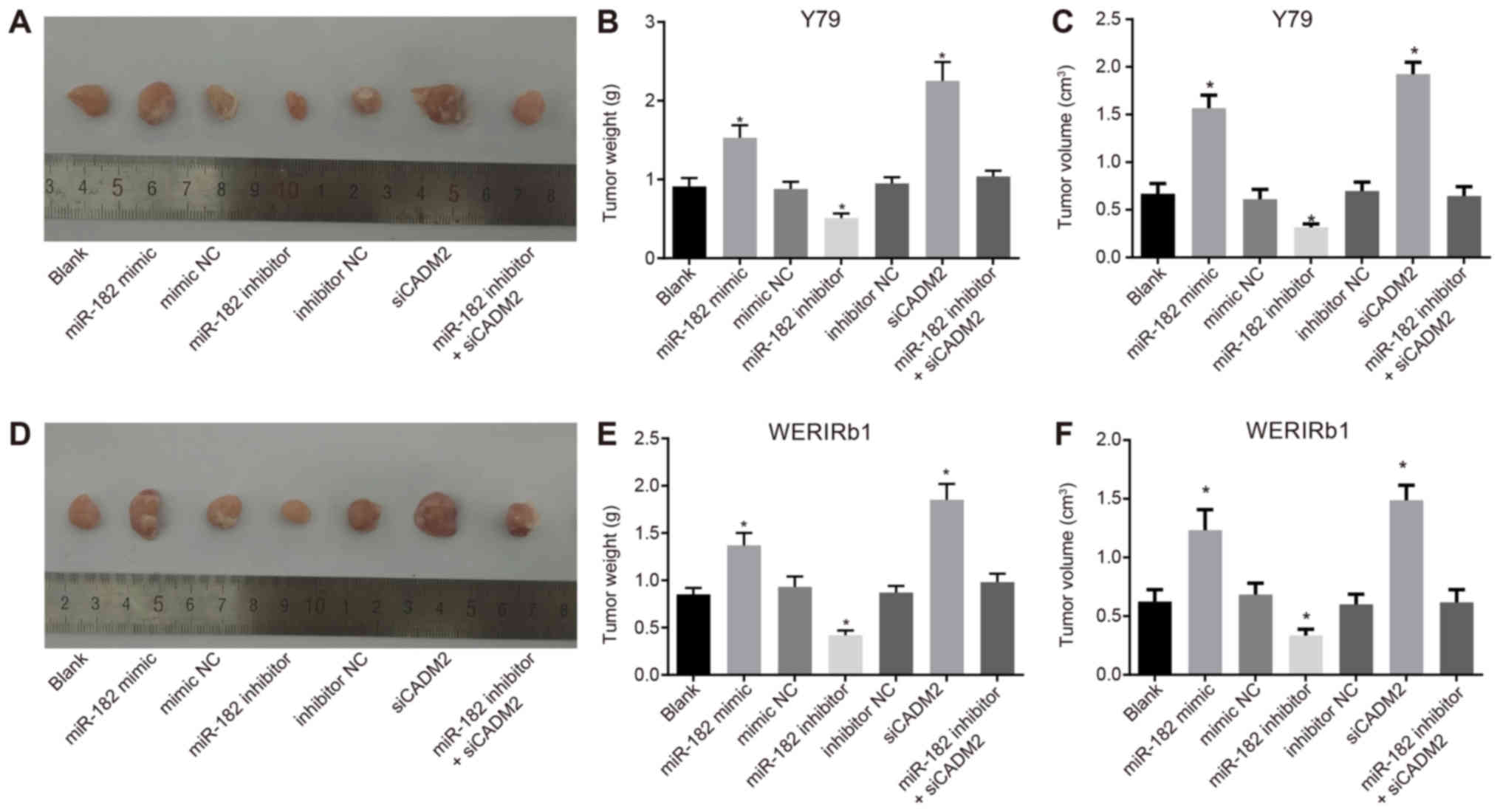|
1
|
Carvalho IN, Reis AH, Cabello PH and
Vargas FR: Polymorphisms of CDKN1A gene and risk of retinoblastoma.
Carcinogenesis. 34:2774–2777. 2013. View Article : Google Scholar : PubMed/NCBI
|
|
2
|
Wong JR, Tucker MA, Kleinerman RA and
Devesa SS: Retinoblastoma incidence patterns in the US
Surveillance, Epidemiology, and End Results program. JAMA
Ophthalmol. 132:478–483. 2014. View Article : Google Scholar : PubMed/NCBI
|
|
3
|
Reis AH, Vargas FR and Lemos B: More
epigenetic hits than meets the eye: microRNAs and genes associated
with the tumorigenesis of retinoblastoma. Front Genet. 3:2842012.
View Article : Google Scholar : PubMed/NCBI
|
|
4
|
Yun J, Li Y, Xu CT and Pan BR:
Epidemiology and Rb1 gene of retinoblastoma. Int J Ophthalmol.
4:103–109. 2011.PubMed/NCBI
|
|
5
|
Song HB, Park KD and Kim JH, Kim DH, Yu YS
and Kim JH: Tissue factor regulates tumor angiogenesis of
retinoblastoma via the extracellular signal-regulated kinase
pathway. Oncol Rep. 28:2057–2062. 2012. View Article : Google Scholar : PubMed/NCBI
|
|
6
|
Wang J, Wang X, Li Z, Liu H and Teng Y:
MicroRNA-183 suppresses retinoblastoma cell growth, invasion and
migration by targeting LRP6. FEBS J. 281:1355–1365. 2014.
View Article : Google Scholar
|
|
7
|
Xu X, Ge S, Jia R, Zhou Y, Song X, Zhang H
and Fan X: Hypoxia-induced miR-181b enhances angiogenesis of
retinoblastoma cells by targeting PDCD10 and GATA6. Oncol Rep.
33:2789–2796. 2015. View Article : Google Scholar : PubMed/NCBI
|
|
8
|
Liu SS, Wang YS, Sun YF, Miao LX, Wang J,
Li YS, Liu HY and Liu QL: Plasma microRNA-320, microRNA-let-7e and
microRNA-21 as novel potential biomarkers for the detection of
retinoblastoma. Biomed Rep. 2:424–428. 2014. View Article : Google Scholar : PubMed/NCBI
|
|
9
|
Jiang L, Mao P, Song L, Wu J, Huang J, Lin
C, Yuan J, Qu L, Cheng SY and Li J: miR-182 as a prognostic marker
for glioma progression and patient survival. Am J Pathol.
177:29–38. 2010. View Article : Google Scholar : PubMed/NCBI
|
|
10
|
Chiang CH, Hou MF and Hung WC:
Up-regulation of miR-182 by β-catenin in breast cancer increases
tumorigenicity and invasiveness by targeting the matrix
metalloproteinase inhibitor RECK. Biochim Biophys Acta.
1830:3067–3076. 2013. View Article : Google Scholar : PubMed/NCBI
|
|
11
|
Liu Z, Liu J, Segura MF, Shao C, Lee P,
Gong Y, Hernando E and Wei JJ: MiR-182 overexpression in
tumourigenesis of high-grade serous ovarian carcinoma. J Pathol.
228:204–215. 2012. View Article : Google Scholar : PubMed/NCBI
|
|
12
|
Huang M, Xia Z, Wang Y, Huang L, Ma Q,
Chen X, Wang H, Lu B and Guo Y: Generation of a monoclonal antibody
specific to a new candidate tumor suppressor, cell adhesion
molecule 2. Tumour Biol. 35:7415–7422. 2014. View Article : Google Scholar : PubMed/NCBI
|
|
13
|
Kandalam MM, Beta M, Maheswari UK,
Swaminathan S and Krishnakumar S: Oncogenic microRNA 17-92 cluster
is regulated by epithelial cell adhesion molecule and could be a
potential therapeutic target in retinoblastoma. Mol Vis.
18:2279–2287. 2012.PubMed/NCBI
|
|
14
|
Brunet A, Datta SR and Greenberg ME:
Transcription-dependent and -independent control of neuronal
survival by the PI3K-Akt signaling pathway. Curr Opin Neurobiol.
11:297–305. 2001. View Article : Google Scholar : PubMed/NCBI
|
|
15
|
De Luca A, Maiello MR, D’Alessio A,
Pergameno M and Normanno N: The RAS/RAF/MEK/ERK and the PI3K/AKT
signalling pathways: Role in cancer pathogenesis and implications
for therapeutic approaches. Expert Opin Ther Targets. 16(Suppl 2):
S17–S27. 2012. View Article : Google Scholar : PubMed/NCBI
|
|
16
|
Liu D, Hou P, Liu Z, Wu G and Xing M:
Genetic alterations in the phosphoinositide 3-kinase/Akt signaling
pathway confer sensitivity of thyroid cancer cells to therapeutic
targeting of Akt and mammalian target of rapamycin. Cancer Res.
69:7311–7319. 2009. View Article : Google Scholar : PubMed/NCBI
|
|
17
|
Cohen Y, Merhavi-Shoham E, Avraham-Lubin
BC, Savetsky M, Frenkel S, Pe’er J and Goldenberg-Cohen N: PI3K/Akt
pathway mutations in retinoblastoma. Invest Ophthalmol Vis Sci.
50:5054–5056. 2009. View Article : Google Scholar : PubMed/NCBI
|
|
18
|
Wang B, Shen J and Wang J: UNBS5162
inhibits proliferation of human retinoblastoma cells by promoting
cell apoptosis. OncoTargets Ther. 10:5303–5309. 2017. View Article : Google Scholar
|
|
19
|
Qi D and Scholthof KB: A one-step
PCR-based method for rapid and efficient site-directed fragment
deletion, insertion, and substitution mutagenesis. J Virol Methods.
149:85–90. 2008. View Article : Google Scholar : PubMed/NCBI
|
|
20
|
Ayuk SM, Abrahamse H and Houreld NN: The
role of photo-biomodulation on gene expression of cell adhesion
molecules in diabetic wounded fibroblasts in vitro. J Photochem
Photobiol B. 161:368–374. 2016. View Article : Google Scholar : PubMed/NCBI
|
|
21
|
Livak KJ and Schmittgen TD: Analysis of
relative gene expression data using real-time quantitative PCR and
the 2(-Delta Delta C(T)) Method. Methods. 25:402–408. 2001.
View Article : Google Scholar
|
|
22
|
Moreno F, Sinaki B, Fandiño A, Dussel V,
Orellana L and Chantada G: A population-based study of
retinoblastoma incidence and survival in Argentine children.
Pediatr Blood Cancer. 61:1610–1615. 2014. View Article : Google Scholar : PubMed/NCBI
|
|
23
|
Beta M, Khetan V, Chatterjee N,
Suganeswari G, Rishi P, Biswas J and Krishnakumar S: EpCAM
knockdown alters microRNA expression in retinoblastoma--functional
implication of EpCAM regulated miRNA in tumor progression. PLoS
One. 9:e1148002014. View Article : Google Scholar : PubMed/NCBI
|
|
24
|
Ning FL, Wang F, Li ML, Yu ZS, Hao YZ and
Chen SS: MicroRNA-182 modulates chemosensitivity of human non-small
cell lung cancer to cisplatin by targeting PDCD4. Diagn Pathol.
9:1432014. View Article : Google Scholar : PubMed/NCBI
|
|
25
|
Li N, Hwangbo C, Jaba IM, Zhang J,
Papangeli I, Han J, Mikush N, Larrivée B, Eichmann A, Chun HJ, et
al: miR-182 modulates myocardial hypertrophic response induced by
angiogenesis in heart. Sci Rep. 6:212282016. View Article : Google Scholar : PubMed/NCBI
|
|
26
|
Du C, Weng X, Hu W, Lv Z, Xiao H, Ding C,
Gyabaah OA, Xie H, Zhou L, Wu J, et al: Hypoxia-inducible MiR-182
promotes angiogenesis by targeting RASA1 in hepatocellular
carcinoma. J Exp Clin Cancer Res. 34:672015. View Article : Google Scholar : PubMed/NCBI
|
|
27
|
Liu Y, Bailey JC, Helwa I, Dismuke WM, Cai
J, Drewry M, Brilliant MH, Budenz DL, Christen WG, Chasman DI, et
al: A common variant in MIR182 is associated with primary
open-angle glaucoma in the NEIGHBORHOOD consortium. Invest
Ophthalmol Vis Sci. 57:3974–3981. 2016. View Article : Google Scholar : PubMed/NCBI
|
|
28
|
He W, Li X, Xu S, Ai J, Gong Y, Gregg JL,
Guan R, Qiu W, Xin D, Gingrich JR, et al: Aberrant methylation and
loss of CADM2 tumor suppressor expression is associated with human
renal cell carcinoma tumor progression. Biochem Biophys Res Commun.
435:526–532. 2013. View Article : Google Scholar : PubMed/NCBI
|
|
29
|
Yang S, Yan HL, Tao QF, Yuan SX, Tang GN,
Yang Y, Wang LL, Zhang YL, Sun SH and Zhou WP: Low CADM2 expression
predicts high recurrence risk of hepatocellular carcinoma patients
after hepatectomy. J Cancer Res Clin Oncol. 140:109–116. 2014.
View Article : Google Scholar
|
|
30
|
Mao Y, Xi L, Li Q, Cai Z, Lai Y, Zhang X
and Yu C: Regulation of cell apoptosis and proliferation in
pancreatic cancer through PI3K/Akt pathway via Polo-like kinase 1.
Oncol Rep. 36:49–56. 2016. View Article : Google Scholar : PubMed/NCBI
|
|
31
|
Liu B, Liu Y, Zhao L, Pan Y, Shan Y, Li Y
and Jia L: Upregulation of microRNA-135b and microRNA-182 promotes
chemoresistance of colorectal cancer by targeting ST6GALNAC2 via
PI3K/AKT pathway. Mol Carcinog. 56:2669–2680. 2017. View Article : Google Scholar : PubMed/NCBI
|
|
32
|
Chen MS, Kim H, Jagot-Lacoussiere L and
Maurel P: Cadm3 (Necl-1) interferes with the activation of the PI3
kinase/Akt signaling cascade and inhibits Schwann cell myelination
in vitro. Glia. 64:2247–2262. 2016. View Article : Google Scholar : PubMed/NCBI
|
|
33
|
Kim KH, Lee KY, Lee JB, Yang KS, Hwang J,
Je BK and Park HJ: Radiologic factors related to double-bar
insertion in minimal invasive repair of pectus excavatum. World J
Pediatr. 11:148–153. 2015. View Article : Google Scholar
|
|
34
|
Akiyama H, Tanaka T, Maeno T, Kanai H,
Kimura Y, Kishi S and Kurabayashi M: Induction of VEGF gene
expression by retinoic acid through Sp1-binding sites in
retinoblastoma Y79 cells. Invest Ophthalmol Vis Sci. 43:1367–1374.
2002.PubMed/NCBI
|
|
35
|
Areán C, Orellana ME, Abourbih D, Abreu C,
Pifano I and Burnier MN Jr: Expression of vascular endothelial
growth factor in retinoblastoma. Arch Ophthalmol. 128:223–229.
2010. View Article : Google Scholar : PubMed/NCBI
|
|
36
|
Chiang CH, Chu PY, Hou MF and Hung WC:
MiR-182 promotes proliferation and invasion and elevates the
HIF-1α-VEGF-A axis in breast cancer cells by targeting FBXW7. Am J
Cancer Res. 6:1785–1798. 2016.
|
|
37
|
Foote RL, Weidner N, Harris J, Hammond E,
Lewis JE, Vuong T, Ang KK and Fu KK: Evaluation of tumor
angiogenesis measured with microvessel density (MVD) as a
prognostic indicator in nasopharyngeal carcinoma: Results of RTOG
9505. Int J Radiat Oncol Biol Phys. 61:745–753. 2005. View Article : Google Scholar : PubMed/NCBI
|
|
38
|
Yu B, Qian T, Wang Y, Zhou S, Ding G, Ding
F and Gu X: miR-182 inhibits Schwann cell proliferation and
migration by targeting FGF9 and NTM, respectively at an early stage
following sciatic nerve injury. Nucleic Acids Res. 40:10356–10365.
2012. View Article : Google Scholar : PubMed/NCBI
|
|
39
|
Spitschak A, Meier C, Kowtharapu B,
Engelmann D and Pützer BM: MiR-182 promotes cancer invasion by
linking RET oncogene activated NF-κB to loss of the HES1/Notch1
regulatory circuit. Mol Cancer. 16:242017. View Article : Google Scholar
|
|
40
|
Liu Y, Yang K, Sun X, Fang P, Shi H, Xu J,
Xie M and Li M: MiR-138 suppresses airway smooth muscle cell
proliferation through the PI3K/AKT signaling pathway by targeting
PDK1. Exp Lung Res. 41:363–369. 2015. View Article : Google Scholar : PubMed/NCBI
|
|
41
|
Shukla S, Maclennan GT, Hartman DJ, Fu P,
Resnick MI and Gupta S: Activation of PI3K-Akt signaling pathway
promotes prostate cancer cell invasion. Int J Cancer.
121:1424–1432. 2007. View Article : Google Scholar : PubMed/NCBI
|
|
42
|
Jia L, Luo S, Ren X, Li Y, Hu J, Liu B,
Zhao L, Shan Y and Zhou H: miR-182 and miR-135b mediate the
tumorigenesis and invasiveness of colorectal cancer cells via
targeting ST6GALNAC2 and PI3K/AKT pathway. Dig Dis Sci.
62:3447–3459. 2017. View Article : Google Scholar : PubMed/NCBI
|
















